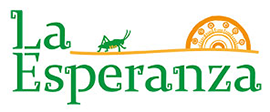About one in 36 children has been identified with autism spectrum disorder (ASD), according to figures from the Centers for Disease Control and Prevention’s autism monitoring network. An estimated 5,437,988 (2.21%) adults in the United States have ASD. It’s considered a developmental disorder. The disorder is called a spectrum not because of severity, although that is a factor, but because of the variability of exhibited symptoms.
Two autistic people can have very different characteristics. For example, one might be hypersensitive to sensory details such as textures and not show repetitive behaviors. The second might not have sensitivity issues but has problems regulating emotions. The only common thread is a degree of difficulty with social interactions.
Within the Latino population, a disparity exists in rates of early diagnosis. According to a report by the Mental Health and Developmental Disabilities National Training Center, white children are estimated to be 20% more likely to be identified with ASD. Early detection means earlier intervention, which can help autistic people learn coping skills for their challenges. That, in turn, leads to better outcomes for autistic people. It also means less frustration for autistic people because they can finally identify their challenges and how to express them.
Early diagnosis lags in the Latino community for several reasons, including a language barrier that makes it difficult to find or understand services. A second factor is poverty because it can be costly to obtain a diagnosis and services to assist an autistic person. A lack of knowledge can also be a consideration.
Increasing accessibility to programs is probably the most difficult aspect because it would require new policies. Providing information, however, is also a necessary part of increasing autism detection in the Latino community. Below are resources for autism in Spanish to help parents who might not be fluent in English:
